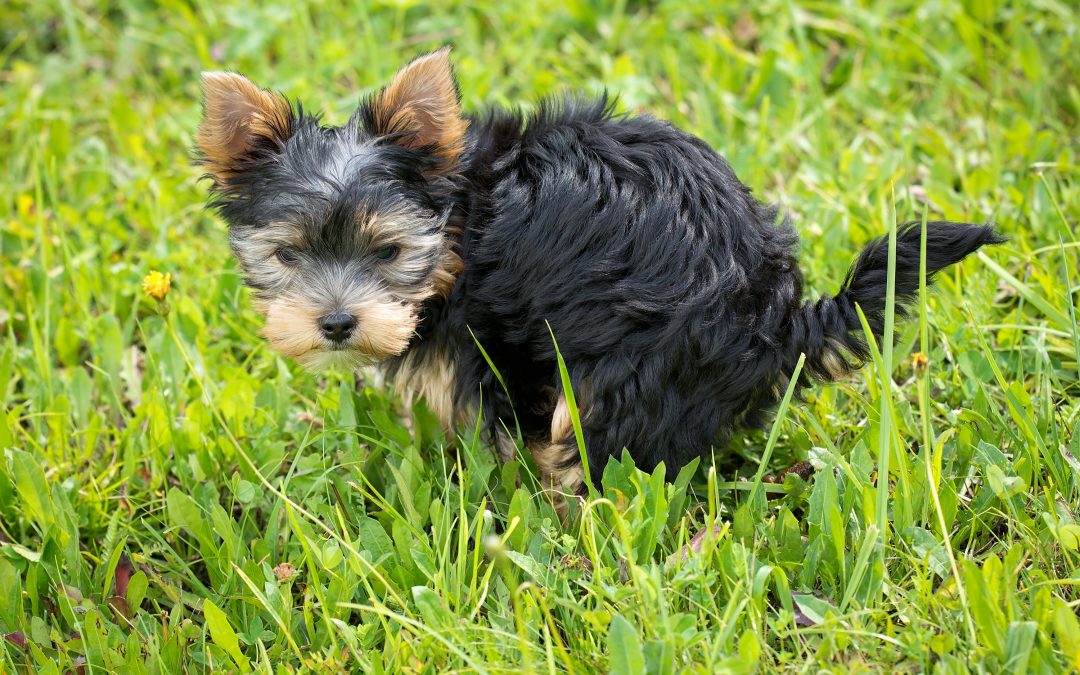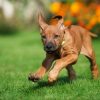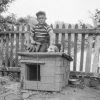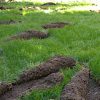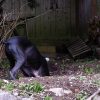When you follow the right procedures, house-training a puppy can take just a few weeks!
Key points to remember during house-training:
When house-training a puppy, don’t forget that this is a baby.
Keep in mind that you are raising the furry equivalent of an infant while house-training a puppy. Be sure to keep your responses to the puppy appropriate for their age. They will learn much faster if you stay calm and keep things in perspective.
Don’t expect too much too soon. Understand exactly what your puppy is capable of and not capable of at this tender age.
At 8 weeks old (2 months), your puppy may only be able to control their bladder for two hours. Not to worry, as they get older their bladder control will improve.

NEVER EVER rub their nose in it if there is an accident!
I can’t emphasize this enough. This is a horrible method for house-training a puppy if you expect them to grow up to be a healthy and well-adjusted dog.
Not only can it screw with their self-esteem into adulthood, but also it’s extremely unsanitary to have all that bacteria shoved up their sensitive baby’s nose. It can result in illness and a compromised immune system later on.
Also, too many confused puppies thought “pooping is bad so I won’t poop anymore”. These pups became not only severely constipated, but also ill from the toxins trapped in their little bodies resulting in expensive trips to the vet.
It’s completely unnecessary and causes more harm to your puppy than good – so don’t do it.
Establishing a house-training routine is important.
Dogs prefer having a regular routine. When you keep to an ongoing schedule, puppies will learn house-training much faster. Serving their meals at the same time every day means that you’ll know when your pup needs to go out and the puppy will naturally adapt to this routine.
Being consistent is the real key.
Whichever house-training method you choose, its important that you be consistent throughout the training process. If you want your dog to learn to do their doggy business outside or on a pad, you also need to reward them every time for doing it right until they learn to do it automatically.
Let’s get started
Supervise your puppy closely when you’re at home.
When you’re house-training your puppy, keep a close eye on them by having them in the same room with you at all times. This will help to prevent accidents from happening. Watch for signs that they have to go (sniffing, walking in circles, and sometimes whining). These are your cues to take them outside immediately, or put them on the potty pad if that’s the method you’ve chosen.
Take them outside first thing in the morning as soon as they wake up.
After that, take them out every hour or so.By taking your puppy outside frequently, you give them plenty of opportunities to do their business outdoors rather than in the house. Tell them “let’s go potty outside” to get them used to the words. Buck up and go outside with them. Don’t just put them outside unsupervised – even if it’s raining – because you need to know for sure that they went. Give them at least 5 minutes. The fresh air will do you both some good!
Tips: If you work a full time job.
Remember, even if you can hold it for 8 hours, don’t expect them to. There are always alternatives.
Best: Find a local doggy day care that you can leave baby at while you’re at work. It will also help with their socialization skills and training reinforcement.
Next best: In addition to using a crate, come home on your lunch break and let baby out. Great for bonding too!
Pick a specific location outside for your puppy to go in.
If you have a yard, choose an area of the yard for them to go in. If you’re in an apartment there’s usually a designated area for dogs. Always lead them to the same area when you take them outside. Dogs have a tendency to return to where they have gone before. They will also go where other dogs have gone too – it’s a scent thing. Not only will it make clean up easier for you, but will also help your dog to learn.
Use a “Potty” Phrase when house-training a puppy.
Keep it simple. Every time you take your pup to the designated area outdoors, use a word or phrase such as “go potty”, or “go pee”, so they will learn to associate those words with the act. Eventually as they get older and you take them for longer walks or when traveling, this phrase will let them know when to quit sniffing around and get down to business.
Be sure to praise and reward your puppy.
During this tricky learning period, it’s very important to praise and reward them every time they relieve themselves outdoors. Tell them “good potty outside” or “good dog”, and give them a nice pat on the head or a hug as a physical reward. Be sure to have genuine happiness in your voice for their good behavior and they will continue to try and get that approval in the future.
Keep your pup crated while you are away.
Keeping your puppy in a crate during long absences is a simple way to help avoid accidents. Be sure to choose a crate that is not too big but not too small either – they need to be able to stand up and turn around in it. If you only have a large crate, you can block the back end of it with a box to make it smaller
-
- Line the crate with a soft thick blanket that can be laundered when necessary. Also, put a couple of toys in with them to keep boredom at bay, one for chewing like a teething bone (something they can’t eat), and one for cuddling like a stuffed toy. (By the way – no rawhide – too many choking incidents).
- Keep your absences as short as possible in these first critical stages of training – no more than 4 hours (and less in the beginning) if possible. It won’t always be like this, but for now there are some sacrifices you’ll have to make.
No food or treats for at least two hours prior to bedtime.
Two hours before their bedtime pick up their water and food dishes, and don’t give them any more treats. This helps them avoid having accidents during the night.
Every Night, (right before bedtime), take them outside for one last go.
Give your puppy the best chance for success by letting them empty their little bladder before you put them in the crate.
They will be much more comfortable throughout the night and it will help them to be calmer if they don’t have to hold it while in their bed – no animal wants to mess where they sleep.
Also, this will help to establish a nightly routine that they will continue the rest of their lives because everybody (people and pets alike) needs to tinkle before bedtime – no matter the age.
Every Morning, immediately take them outside to do their business.
Don’t be surprised if (especially in the beginning) their happiness to see you overwhelms their ability to control themselves.
Depending on your pup’s age, their tiny little bladder will only be able to hold it for a short period of time and excitement can trigger the tinkles. Don’t worry; as they get older they will gain better control.
How to Handle Accidents.
Accidents will happen along the way – this is a baby after all.
Take them to the scene of the accident and point at it while saying “no” (not yelling). Then take them outside and say “good dog potty outside” or to their potty pad and say “good dog potty here”, but do not rub their nose in it.
The Bottom Line
This is a furry infant so keep your reactions to the puppy appropriate for their age.
They will learn much quicker if you keep things in perspective.
Stay positive, be patient, and be forgiving when accidents happen (because they will).
It’s not just a hassle for you, but it’s upsetting and embarrassing for them as well.
The time and work that you put into house-training your puppy will be totally worth it.
Take the time and make the effort to train your pup properly. When you do, both you and your new best friend will avoid many accidents and unnecessary frustration.
Always use patience and understanding.
If you are consistent with training and you reward your pup for good behavior, house-training should be a fairly quick and painless process.
DogHouseandGarden.com is a participant in the Amazon Associates affiliate advertising program.
This program and others help us earn commissions by linking to online retailers.
Click here to see our Affiliate Disclosure page.
Views: 42
